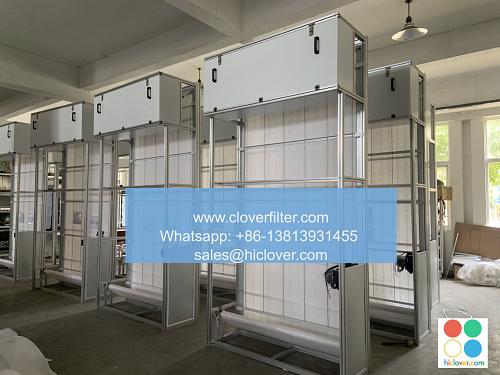Automatic Roll Air Filters: A Key Component of St. John’s Hospital’s Air Quality Strategy

St. John’s Hospital, a leading healthcare institution, has been at the forefront of innovation in patient care and comfort. One of the key components of its air quality strategy is the use of Automatic Roll Air Filters (ARAF). These advanced filters have revolutionized the way hospitals maintain indoor air quality, ensuring a healthier environment for patients, staff, and visitors. In this article, we will explore the benefits and features of ARAF and how they contribute to St. John’s Hospital’s commitment to providing exceptional care.
ARAF are designed to provide continuous, uninterrupted filtration of airborne particles and contaminants. Unlike traditional filters that need to be replaced manually, ARAF use a roll of filter media that automatically advances as it becomes dirty, ensuring that the air quality remains consistent and clean. This innovative technology has several benefits, including reduced maintenance costs, improved air quality, and increased energy efficiency.
The ARAF system used at St. John’s Hospital is equipped with advanced sensors that monitor the filter’s performance and automatically adjust the airflow to maintain optimal conditions. This ensures that the hospital’s air quality meets the highest standards, even in areas with high traffic or contamination risks. The system is also designed to work in conjunction with the hospital’s existing HVAC system, allowing for seamless integration and minimal disruption to daily operations.
One of the most significant advantages of ARAF is their ability to capture a wide range of airborne particles, including dust, pollen, bacteria, and viruses. This is particularly important in a hospital setting, where patients with compromised immune systems are more susceptible to airborne infections. By using ARAF, St. John’s Hospital can significantly reduce the risk of hospital-acquired infections (HAIs) and create a safer environment for patients and staff.
In addition to improving air quality, ARAF also contribute to energy efficiency and cost savings. By reducing the need for manual filter replacements and minimizing waste, ARAF can help hospitals like St. John’s reduce their environmental footprint and lower their operating costs. This is in line with the hospital’s commitment to sustainability and reducing its impact on the environment.
St. John’s Hospital’s decision to install ARAF is a testament to its dedication to providing exceptional patient care and comfort. By investing in cutting-edge technology, the hospital can ensure that its patients receive the best possible treatment in a safe and healthy environment. The use of ARAF is just one example of the hospital’s innovative approach to air quality management, and it demonstrates its commitment to staying at the forefront of healthcare technology.
As the healthcare industry continues to evolve, it is likely that we will see even more innovative solutions like ARAF being adopted by hospitals around the world. These advanced filters have the potential to transform the way we manage air quality in healthcare settings, and their benefits will undoubtedly be felt by patients, staff, and visitors alike. As we look to the future, it is clear that ARAF will play an increasingly important role in maintaining the high standards of air quality that patients demand and deserve.
Conclusion
In conclusion, Automatic Roll Air Filters are a key component of St. John’s Hospital’s air quality strategy, providing continuous, uninterrupted filtration of airborne particles and contaminants. The benefits of ARAF, including reduced maintenance costs, improved air quality, and increased energy efficiency, make them an attractive solution for hospitals looking to improve patient care and comfort. As the healthcare industry continues to innovate and evolve, it is likely that we will see even more widespread adoption of ARAF and other advanced air filtration technologies.
Frequently Asked Questions (FAQs)
Q: How do Automatic Roll Air Filters work?
A: ARAF use a roll of filter media that automatically advances as it becomes dirty, ensuring continuous filtration of airborne particles and contaminants.
Q: What are the benefits of using ARAF in hospitals?
A: The benefits of ARAF include reduced maintenance costs, improved air quality, increased energy efficiency, and reduced risk of hospital-acquired infections.
Q: Can ARAF be integrated with existing HVAC systems?
A: Yes, ARAF can be designed to work in conjunction with existing HVAC systems, allowing for seamless integration and minimal disruption to daily operations.
Q: Are ARAF cost-effective?
A: Yes, ARAF can help hospitals reduce their operating costs by minimizing waste, reducing the need for manual filter replacements, and improving energy efficiency.

